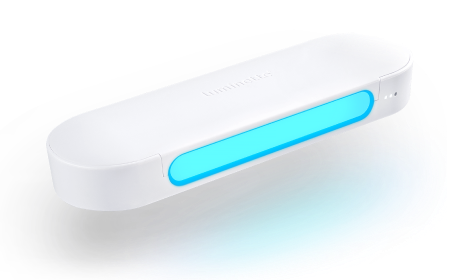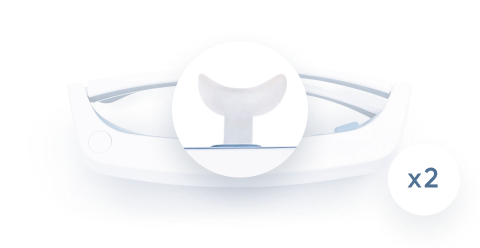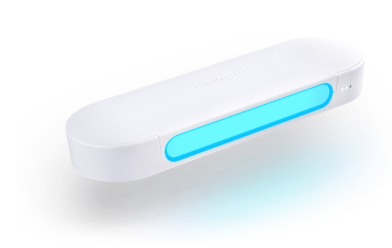Сон является важнейшим аспектом нашей жизни, влияющим на наше физическое, умственное и эмоциональное благополучие. Среди различных аспектов сна одним из ключевых элементов, часто упускаемых из виду, является core sleep. В отличие от общей продолжительности сна, core sleep относится к важному, непрерывному периоду отдыха, который необходим нашему организму для оптимального функционирования. Понимание core sleep имеет решающее значение для достижения сбалансированного и восстанавливающего режима сна. В этом тексте мы подробно рассмотрим тонкости core sleep, изучим его определение, научные основы и практические стратегии, которые помогут вам максимально использовать его преимущества. К концу вы получите всестороннее понимание того, как приоритет core sleep может привести к улучшению общего здоровья и качества жизни.
Основы сна
Понимание основ сна важно для осознания значимости основного сна. Сон — это сложный биологический процесс, включающий различные стадии и циклы, каждая из которых выполняет уникальную функцию в процессе восстановления. Он не только способствует физическому восстановлению, но и играет важную роль в когнитивных функциях, эмоциональной регуляции и поддержании общего здоровья.
Стадии сна
Сон делится на отдельные стадии, каждая из которых характеризуется различными паттернами мозговых волн и физиологической активностью. Две основные стадии — это REM (сон с быстрым движением глаз) и NREM (сон без быстрого движения глаз). В то время как REM-сон связан с яркими сновидениями и обновлёнными умственными способностями, NREM-сон включает более лёгкие стадии, за которыми следует глубокий восстановительный сон, необходимый для физического восстановления.
REM (сон с быстрым движением глаз)
REM-сон — это важная фаза цикла сна, характеризующаяся быстрыми движениями глаз, повышенной активностью мозга и яркими сновидениями. Эта стадия играет ключевую роль в когнитивных функциях, консолидации памяти и эмоциональной регуляции. Во время REM мозг очень активен, обрабатывая информацию за день, что способствует решению проблем и творчеству.
NREM (сон без быстрого движения глаз)
NREM-сон состоит из трёх стадий: N1, N2 и N3. N1 — самая лёгкая стадия сна, когда человек переходит от бодрствования к сну, обычно длится несколько минут. N2, которая занимает большую часть времени сна, характеризуется замедлением сердечного ритма и снижением температуры тела, подготавливая организм к глубокому сну. N3, также известный как медленноволновой сон, — самая глубокая стадия, во время которой происходит физическое восстановление и рост. В этот период организм восстанавливает ткани, укрепляет кости и мышцы, а также усиливает иммунную систему.
Циклы сна
Сон происходит циклами, обычно длительностью около 90 минут. Каждый цикл состоит из последовательного прохождения стадий NREM и REM. Этот циклический паттерн повторяется несколько раз за ночь, обеспечивая сбалансированное сочетание восстановительного сна, необходимого для ощущения бодрости и свежести после пробуждения. Понимание этих циклов может помочь оптимизировать режим сна для лучшего отдыха и общего здоровья.
Рекомендации по продолжительности сна
Необходимое количество сна варьируется в зависимости от возраста и индивидуальных факторов. Например, младенцам может требоваться до 16 часов в сутки из-за их быстрого роста и развития, тогда как взрослым обычно полезно спать 7-9 часов за ночь. Однако важно отметить, что качество сна так же важно, как и его количество. Поддержание хорошей гигиены сна и регулярного режима сна может помочь улучшить качество сна.
Определение основного сна
Основной сон — это фундаментальный период непрерывного отдыха, который имеет решающее значение для поддержания оптимального физического и когнитивного функционирования. Он представляет собой основную часть нашего ночного цикла сна, обеспечивая восстановительные преимущества, необходимые для общего благополучия. Основной сон необходим для поддержания бодрости, стабильности настроения и здоровой иммунной системы.
Чем основной сон отличается от глубокого сна
Основной сон против глубокого сна: в то время как глубокий сон является важной составляющей цикла сна и относится конкретно к самой спокойной и восстанавливающей фазе, основной сон охватывает весь цикл сна. Это означает, что он включает как стадии REM, так и NREM, обеспечивая сбалансированное сочетание когнитивного и физического восстановления. Понимание различий между этими стадиями поможет вам осознать важность полноценного ночного отдыха.
Роль основного сна в архитектуре сна
Основной сон играет ключевую роль в сложной архитектуре наших моделей сна. Он служит фундаментом, на котором строится остальной цикл сна. Без адекватного основного сна последующие стадии сна, включая REM и NREM, могут быть нарушены, что приводит к снижению общего качества сна. Этот фундаментальный период необходим для обеспечения эффективного функционирования всей архитектуры сна, способствуя здоровью и благополучию в различных аспектах жизни, включая умственную ясность, физическое здоровье и эмоциональную устойчивость.
Наука, лежащая в основе основного сна
Понимание науки, лежащей в основе основного сна, раскрывает сложные физиологические процессы, подчеркивающие его важность. Основной сон необходим нашим телам для плавного прохождения различных стадий цикла сна, включая REM (быстрое движение глаз) и NREM (медленное движение глаз). Этот циклический процесс важен не только для базового отдыха, но и играет фундаментальную роль в более сложных функциях организма, таких как консолидация памяти, восстановление когнитивных функций и физическое восстановление. Во время основного сна мозг выполняет критические действия, такие как синаптическая обрезка и нейрохимический ребаланс, которые имеют решающее значение для обучения, эмоциональной регуляции и общего психического благополучия.
REM основной сон особенно важен, так как он значительно способствует сохранению памяти и творческому решению проблем. Именно на этой стадии мозг обрабатывает и сохраняет информацию, полученную в течение дня, улучшая нашу способность вспоминать факты и переживания. Достижение оптимального баланса стадий основного сна является ключом к тому, чтобы получить все преимущества этого фундаментального аспекта наших моделей сна. Поэтому понимание того, сколько основного сна вам нужно, и осознание значимости каждой стадии основного сна являются основополагающими для формирования здорового, восстанавливающего режима сна. Кроме того, внимание к таким факторам, как гигиена сна, включая поддержание регулярного графика сна, создание спокойной обстановки и минимизацию воздействия экранов перед сном, может значительно повысить качество основного сна.

Факторы, влияющие на основной сон
Несколько критически важных элементов влияют на качество и продолжительность основного сна, который является важной составляющей для поддержания здоровья и благополучия. Прежде всего, это среда для сна, которая включает в себя различные факторы, такие как уровень фонового шума, температура в комнате и комфорт постельных принадлежностей. Спокойная и комфортная среда для сна способствует непрерывному отдыху, позволяя человеку достичь необходимого основного сна для оптимального физического здоровья и психического благополучия. Такие элементы, как плотные шторы, аппараты белого шума и поддержание постоянной температуры в комнате, могут быть полезны для создания этой идеальной среды.
Кроме того, управление стрессом играет решающую роль в обеспечении качественного основного сна. Высокий уровень стресса может нарушать естественное прохождение стадий сна, потенциально препятствуя достижению необходимого REM основного глубокого сна, который жизненно важен для когнитивных функций и эмоциональной регуляции. Такие техники, как медитация осознанности, дыхательные упражнения и установление режима отхода ко сну, могут помочь снизить стресс и способствовать более спокойному сну.
Кроме того, воздействие света является важным фактором, влияющим на основной сон. Естественный свет служит сигналом для внутреннего биологического часов организма, помогая регулировать цикл сна и бодрствования. Напротив, воздействие искусственного света, особенно от экранов и электронных устройств, может нарушать этот цикл, затрудняя достижение необходимого количества основного сна. Светотерапия, такая как инновационные очки для светотерапии Luminette, может значительно помочь в управлении воздействием света, имитируя естественный солнечный свет и помогая сбросить внутренние биологические часы организма. Включение светотерапии в ваши ежедневные ритуалы, особенно утром, может способствовать более плавному и эффективному регулированию ваших режимов сна, в конечном итоге улучшая качество основного сна и общее состояние здоровья.

Ключевые факторы, влияющие на основной сон:
- Среда для сна: Убедитесь, что ваша спальня комфортна и способствует сну, с поддерживающим матрасом и подушками.
- Управление стрессом: Включайте техники расслабления, такие как медитация или глубокое дыхание, чтобы снизить стресс перед сном.
- Воздействие света: Ограничьте время перед экраном перед сном и старайтесь получать естественный свет в течение дня для регулирования внутренних часов организма.
- Постоянный график сна: Старайтесь ложиться спать и просыпаться в одно и то же время каждый день, даже в выходные, чтобы поддерживать стабильный цикл сна.
- Вечерний ритуал: Установите успокаивающий предсонный ритуал, например чтение или теплую ванну, чтобы сигнализировать телу о необходимости расслабиться.
- Пищевые привычки: Избегайте тяжелой пищи, кофеина и алкоголя перед сном, так как они могут нарушить ваш сон.
- Уровень физической активности: Регулярные упражнения помогают быстрее засыпать, но старайтесь избегать интенсивной активности непосредственно перед сном.
- Температура и влажность: Держите спальню прохладной и хорошо проветриваемой для создания идеальной среды для сна.
- Уровень шума: Снизьте уровень шума с помощью беруш или генераторов белого шума, чтобы блокировать раздражающие звуки.
- Светотерапия: Рассмотрите возможность использования светотерапевтических приборов утром, чтобы помочь сбросить ваш цикл сна и бодрствования, особенно в темные месяцы.
Светотерапия для основного сна
Светотерапия становится все более популярным методом регулирования циклов сна и улучшения качества основного сна. Этот неинвазивный метод включает сидение перед специализированным светотерапевтическим прибором, который излучает яркий свет, имитирующий естественный солнечный свет. Подражая естественному световому воздействию, эти устройства помогают регулировать внутренние часы организма, особенно для тех, кто не имеет доступа к естественному свету из-за рабочего графика или условий проживания.
Помимо содействия регулярным режимам сна, светотерапия также оказалась полезной для людей с сезонными перепадами настроения — типом расстройства, возникающего в темные месяцы года. Светотерапевтические приборы могут помочь облегчить такие симптомы, как усталость, пониженное настроение и трудности со сном, что в конечном итоге способствует улучшению качества основного сна.
Стратегии оптимизации основного сна
Достижение и поддержание основного сна имеет решающее значение для общего благополучия, и внедрение эффективных стратегий может значительно улучшить его качество. Одной из основных тактик является установление постоянного графика сна. Ложиться спать и просыпаться в одно и то же время каждый день помогает регулировать внутренние часы организма, облегчая достижение необходимого количества основного сна. Создание расслабляющего вечернего ритуала не менее важно. Занятия успокаивающими действиями, такими как чтение, легкая растяжка или упражнения на осознанность, сигнализируют телу, что пора расслабиться, облегчая переход в состояние спокойного сна.
Кроме того, создание благоприятной для сна среды может значительно повлиять на основной сон. Это включает оптимизацию таких факторов, как температура в комнате, уровень освещения и уровень шума. Комфортная и спокойная обстановка способствует непрерывному отдыху, позволяя максимально использовать преимущества основного сна. Наконец, важно устранить факторы, нарушающие сон. Это может включать управление стрессом, избегание стимуляторов перед сном и обращение за профессиональной помощью при наличии скрытых нарушений сна. Применяя эти стратегии, люди могут предпринять активные шаги для обеспечения оптимального количества основного сна, необходимого для более здоровой и восстановленной жизни.

Заключение
В заключение, понимание значения основного сна имеет первостепенное значение для достижения сбалансированного и спокойного режима сна. Осознание того, что такое основной сон, и понимание его роли в структуре сна позволяют людям уделять приоритетное внимание этому важному аспекту отдыха. Важно не только количество основного сна, но и оптимизация его глубины и качества. Признавая важность REM-сна, глубокого основного сна и различных стадий цикла сна, мы открываем потенциал для улучшения когнитивных функций, эмоционального благополучия и общего физического здоровья. Помните, что комплексный подход к сну, включающий регулярный график, успокаивающий ритуал перед сном и благоприятную среду для сна, может значительно способствовать более восстановительному и полноценному отдыху. Принятие этих стратегий позволяет людям получить все преимущества основного сна, что в конечном итоге ведет к более счастливой и здоровой жизни.
Часто задаваемые вопросы
Что такое основной сон?
Основной сон — это критическая часть нашего цикла сна, обычно первые 3-5 часов, в течение которых организм достигает глубокого сна. Это самая восстанавливающая часть сна, необходимая для когнитивных функций, таких как консолидация памяти и восстановление мышц.
Чем основной сон отличается от легкого сна или REM-сна?
Хотя легкий сон и REM-сон имеют свое значение, основной сон — это время, когда мы погружаемся в глубокий сон. Этот период крайне важен, так как он является самой спокойной и восстанавливающей частью цикла сна, способствующей важным функциям организма.
Почему основной сон важен?
Основной сон критически важен, поскольку это самая восстанавливающая часть нашего цикла сна. Именно в это время организм восстанавливает мышцы, укрепляет иммунную систему и консолидирует воспоминания. Недостаток основного сна может привести к различным проблемам со здоровьем, включая ухудшение когнитивных функций, ослабление иммунитета и расстройства настроения.



















































 Please note
Please note




















